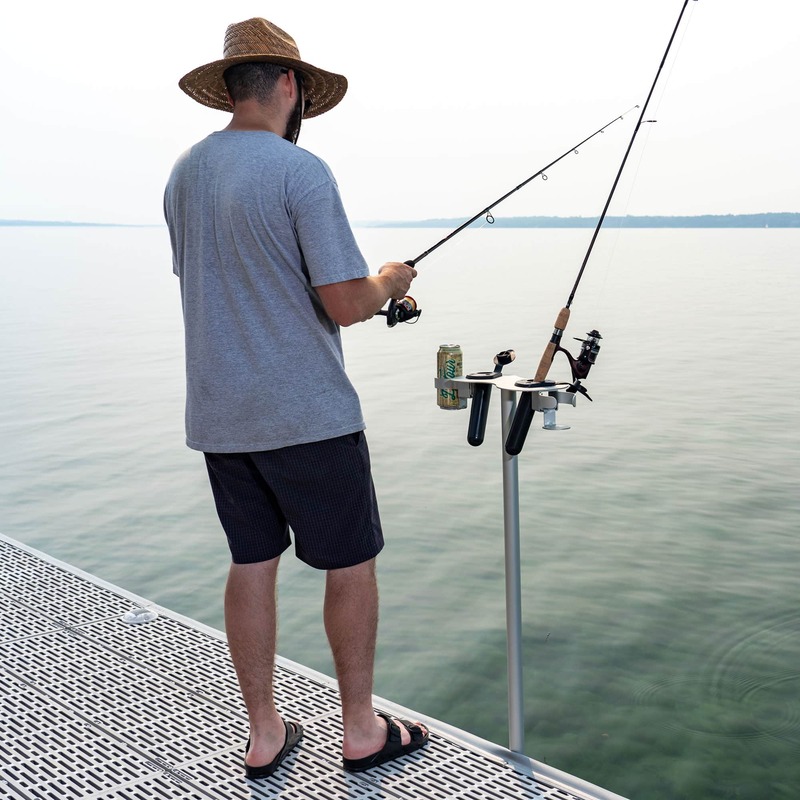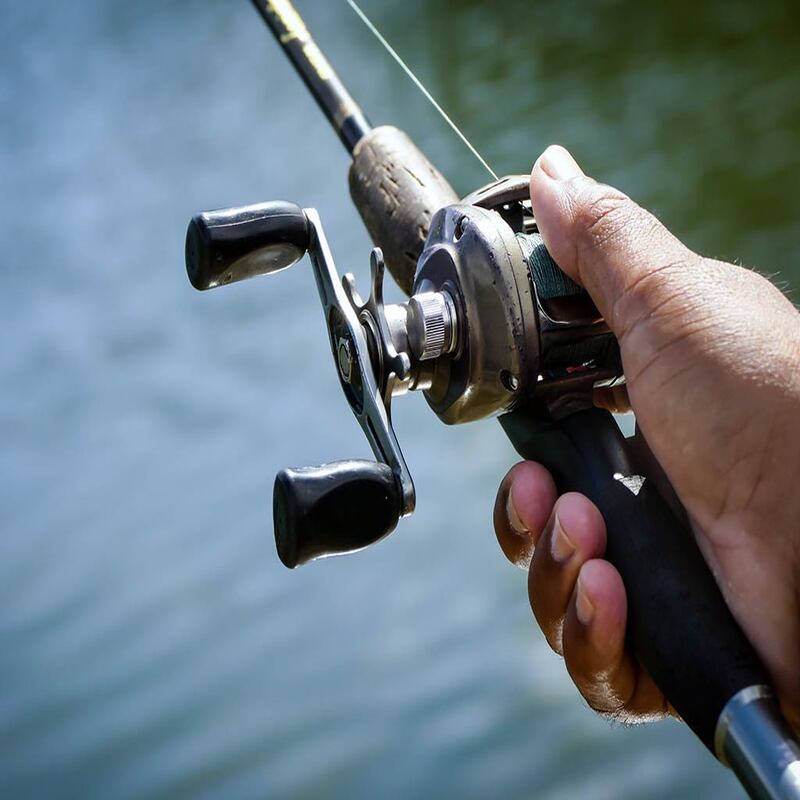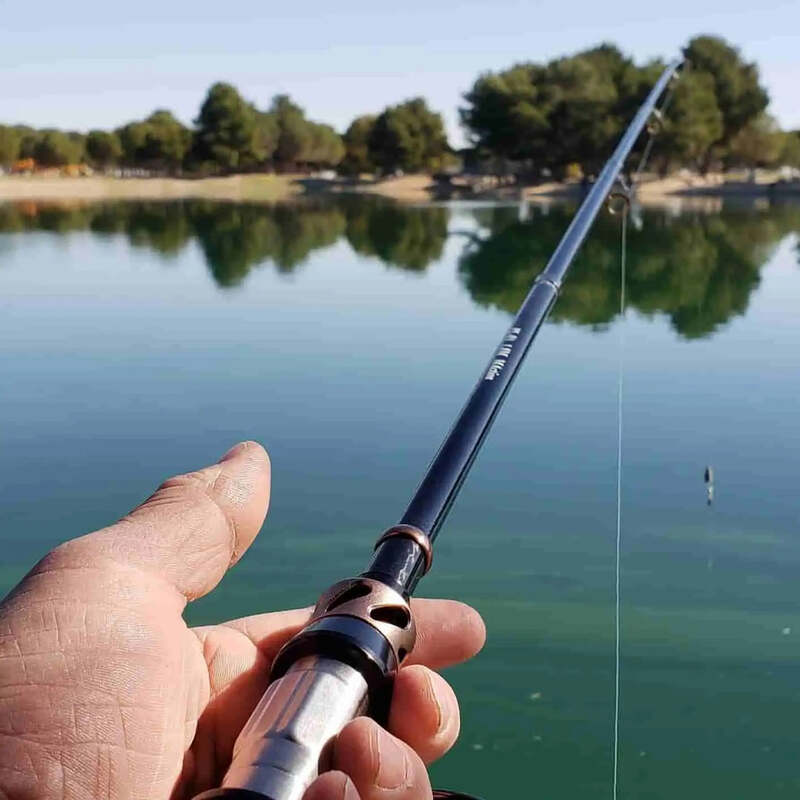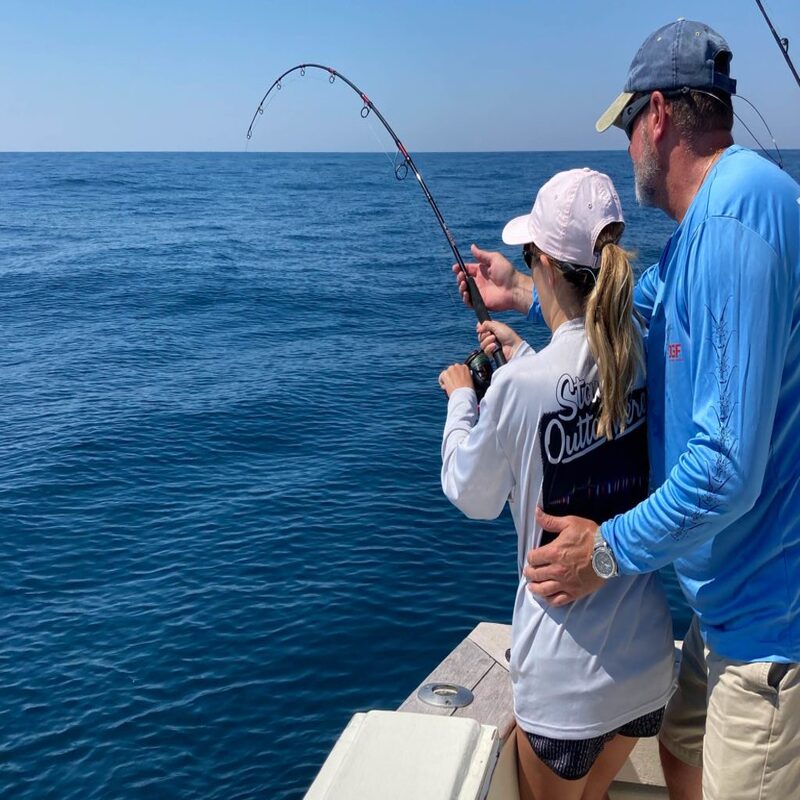Gathering Your Fishing Gear
How to set up fishing rod? Proper preparation is the first step to a successful fishing trip. Gather your essential equipment before heading out.
Choosing the Right Spinning Reel
Identify the fishing reel that suits your needs. Consider the type of fish you’re targeting. Ensure the reel fits well with your rod for optimal performance.
Selecting a Compatible Spinning Rod
Pick a rod that matches your spinning reel. Talk to experts at local fishing stores for advice. A correct pairing ensures better handling and casting.
Picking the Appropriate Fishing Line
Select a line based on the fish species you aim to catch. Different types offer varying strengths and visibility. Choose a line that balances sensitivity with toughness.
Types of Bait and Hooks and Their Uses
Different fish prefer different baits. Research the best options for your target species. Carry a variety of baits to switch if one isn’t working.
The Necessity of Scissors in Your Tackle Box
Include a pair of sharp scissors. They’re essential for cutting the fishing line. This simple tool is a must-have for any fishing set up.

Understanding Your Fishing Equipment
To become an adept angler, recognizing the significance of each part of your fishing gear is fundamental.
Identifying Key Components of the Spinning Reel
Before you start fishing, familiarize yourself with the spinning reel’s essential parts. Know the spool, where you wrap the fishing line. The handle lets you reel the line back in. The bail, a metal arm, controls the line release. The reel foot attaches the reel to the rod. Adjust line release with the drag knob. And the line roller assists in guiding the line to the rod.
Functions and Importance of the Fishing Rod’s Parts
The rod is your main tool in fishing. The rod tip, sensitive to bites, requires careful handling. Guides hold the line close to the rod and aid in casting. The reel seat holds the reel firmly to the rod. A comfortable handle is crucial, as you’ll hold it throughout your fishing.
Assembling Your Fishing Rod and Reel
Attaching the Reel to the Rod
Assembling your fishing gear starts with combining the reel and rod correctly. Begin by loosening the reel seat on your rod. Next, align the reel foot with the reel seat, and then secure it by tightening the reel seat until the reel is firmly in place. Ensure that there’s no wobble to avoid any mishaps while casting.
Properly Spooling the Reel
Spooling your reel is crucial to prevent line twists and snags. Open the bail and wrap the line around the reel spool, forming a base loop. Use simple overhand knots to secure the line’s base. Trim the excess line, leaving about a 1/4 inch past the second knot. Close the bail, and then, while keeping tension, reel the line onto the spool until you reach the recommended capacity.
Threading the Line Through the Rod’s Guides
After spooling, you’ll thread the line through the rod’s guides. Start from the guide closest to the reel and work your way up to the tip. Do this carefully to ensure the line goes through each guide without missing any. Remember to keep tension on the line to avoid tangles as you thread it through.

Tying Knots for Secure Fishing
Tying the correct knot is essential for a successful fishing experience. A good knot ensures your hook stays attached to your line when a fish bites. Here are some knot-tying techniques suited for different levels of experience.
Basic Fishing Knot for Beginners
A simple and efficient knot for beginners is the improved clinch knot. It’s easy to tie and quite strong, making it a trusted choice for many anglers. To tie this knot, follow these steps:
- Thread the end of your line through the eye of the hook.
- Wrap the line around itself 5-7 times.
- Thread the end through the small loop near the hook eye.
- Bring the end back and thread it through the larger loop created.
- Pull tight, ensuring the coils compress neatly.
Practice this basic knot until it’s easy for you to do. Remember, the goal is to make it strong and snug.
Advanced Knots for Larger Fish
For larger fish, stronger knots are necessary. The Palomar and Albright knots are excellent choices. These knots hold up well under the strain of bigger, fighting fish.
To tie a Palomar knot:
- Double a 6-inch length of line and pass it through the hook eye.
- Tie a basic overhand knot with the doubled line, letting the hook hang lose.
- Pass the loop over the hook.
- Pull the loop to tighten around the eye, and trim the excess.
The Albright knot is good for connecting two lines of different thicknesses. It’s harder to tie, but here’s a simplified guide:
- Make a loop with the heavier line.
- Pass the end of the lighter line through the loop.
- Wrap it around the loop 10 times.
- Thread the end back through the initial bend, going the opposite way.
- Tighten carefully, pulling both ends.
Experiment with these advanced knots and decide which works best for your fishing setup. The right knot can make all the difference in landing a big catch.

Setting the Drag Correctly
Once you have your spinning reel and rod assembled, it’s critical to set the drag properly. The drag system allows you to control how much resistance a fish feels when it pulls on the line. A correctly set drag prevents the line from breaking under strain and aids in tire out the fish.
Determining the Ideal Drag Tension
To find the ideal drag tension, start by turning the drag knob on your reel. Tighten the knob to increase resistance, or loosen it for less. Pull the line to test the tension; it should yield slightly under pressure. Aim for a setting that lets the line out smoothly but still offers some resistance.
- Turn the drag knob clockwise to increase tension.
- Pull on the line after each adjustment to check the resistance.
- Continue until you achieve a smooth yet firm tension.
Remember, the drag setting may vary based on the size and strength of the fish you’re targeting. As a general rule, the drag should be set to one-third of the breaking strength of your fishing line.
Signs of Incorrect Drag Settings
Incorrect drag settings can lead to lost catches or broken tackle. Be aware of these signs:
- If the drag is too loose, the fish will pull out the line too easily. This can make it difficult to hook the fish securely.
- A drag set too tight may prevent the line from yielding at all. This puts too much stress on the line and increases the risk of it snapping.
Watch how your rod behaves when a fish is on the line. If the rod bends deeply but the line doesn’t give, or if the reel doesn’t release any line, your drag may be too tight. Conversely, if the fish seems to take line without much resistance, your drag might be too loose. Adjust the drag as needed to maintain the ideal tension during the fight with the fish.
Casting Techniques for Beginners
Mastering casting is vital to your fishing success. Here’s how to get started.
Preparing to Cast
Before casting, make sure to:
- Check your surroundings for obstacles or people.
- Position your hands correctly on the rod.
- Open the bail of the spinning reel.
- Hold the line with your index finger.
- Ensure about 1-1 1/2 feet of line hangs from the rod tip.
Keep these steps in mind to stay safe and ready.
The Fundamentals of a Good Cast
To execute a good cast, follow these instructions:
- Point the rod tip towards the ground.
- Swiftly lift the rod to a vertical position.
- As the rod reaches eye level, release the line with your index finger.
- Aim slightly above your target to compensate for gravity.
- Watch the bait’s flight and prepare to manage the line.
With practice, you’ll improve your casting skills significantly.
Final Touches Before Hitting the Water
As you prepare to embark on your fishing journey, there are a few final touches to ensure top-notch readiness. With your fishing rod now set up, let’s focus on mastering the reeling process and going over the safety checks one last time before you hit the water.
Tips for Reeling In
Reeling in your catch is both an art and a science. Here are quick tips to help you reel in smoothly and efficiently:
- Keep the line tight to maintain control of the fish.
- Reel in steadily, avoiding jerky motions to prevent the line from snapping.
- Use the rod to guide the fish, reeling in as you lower the rod tip and pausing as you lift it.
- Be mindful of the drag setting; if the fish fights hard, let the drag do its job.
- Stay patient and don’t rush, as pulling too hard can lose you the fish.
By following these steps, you’ll increase your chances of successfully landing your catch.
Safety Precautions and Final Checks
Safety should always come first. Before casting your line into the water, perform these final checks:
- Ensure no one is close enough to be hit by your hook when you cast.
- Check that your fishing knots are secure and the hooks are sharp.
- Confirm that the reel seat is tightened and the reel is secure.
- Look around for any trip hazards on the boat or shore.
- Wear a life jacket if fishing from a boat or near strong currents.
By giving your setup one last thorough review, you’re not just ensuring safety, but also avoiding potential mishaps that can disrupt your fishing adventure. Now, with all these steps behind you, you’re truly ready to enjoy the fishing experience.
Conclusion: Ready to Fish
Well done—it’s time to put your fishing rod setup skills to the test! With all the steps meticulously followed, from gathering your gear to setting the drag correctly, you are equipped for an enjoyable fishing adventure. Your preparation ensures not just a better chance at a successful catch, but also a safe and satisfying experience by the water.
Remember always to double-check your equipment before casting—secure knots, properly set drag, and a well-spooled reel are your keys to a good start. When casting your line, be patient and remain conscious of your surroundings for a safe outing. The techniques for reeling in you’ve mastered will help you handle the fight when you hook a fish with confidence.
Whether you’re aiming to catch your dinner or just enjoying the thrill of the catch and release, your newfound knowledge on how to set up a fishing rod will enhance your angling skills. So take a deep breath, cast your line, and soak in the serenity of fishing. Here’s to tight lines and great tales of the one that didn’t get away!
